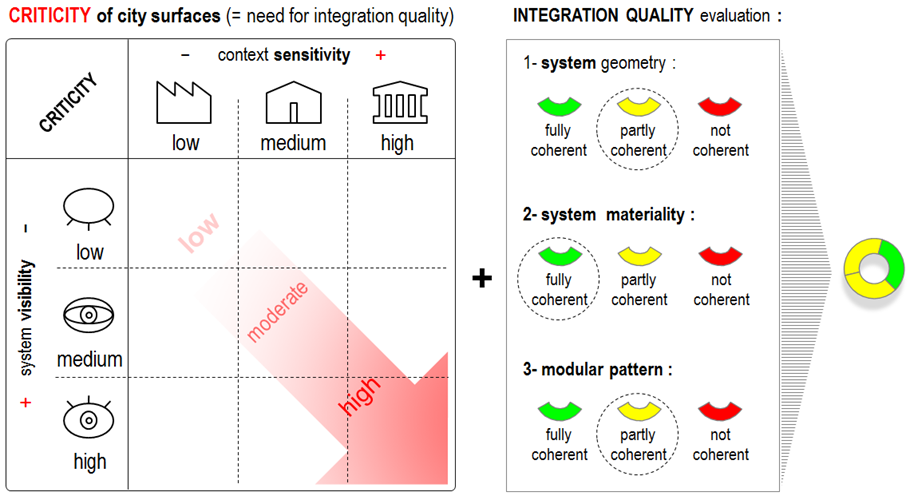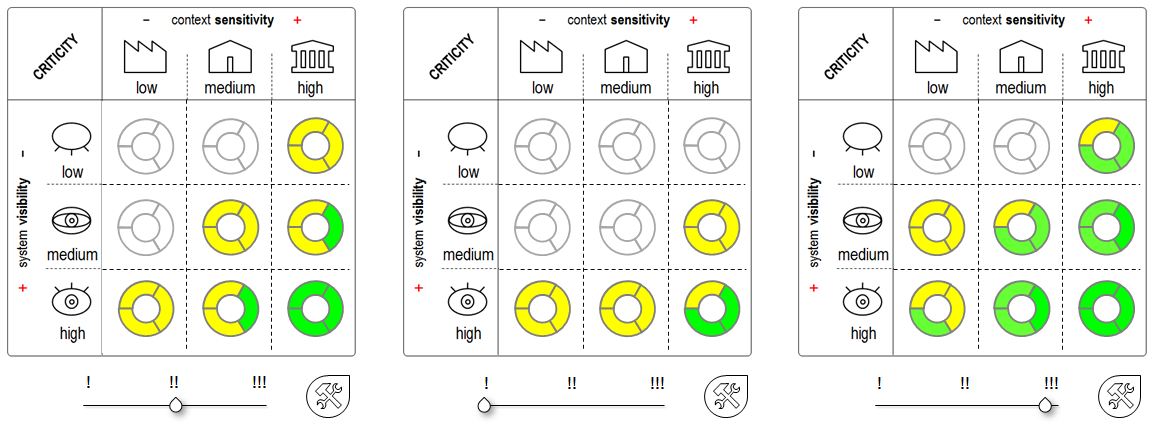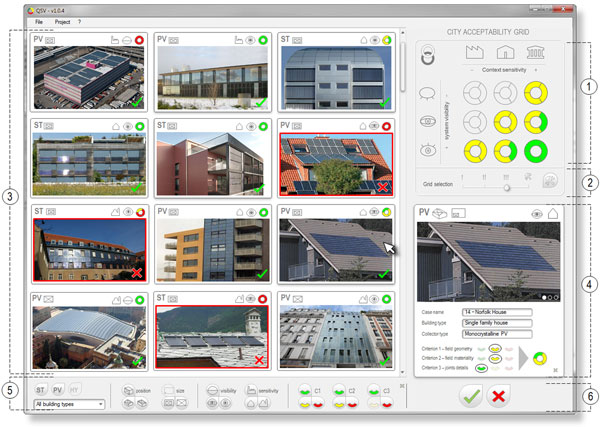Promoting solar energy while preserving urban context
Method developed by Maria Cristina Munari Probst, Christian Roecker, Pietro Florio
Introduction
New energy regulations, together with mandatory solar fractions for electricity and Domestic Hot Water are introducing new materialities and geometries in buildings, resulting in new forms of architectural expression which are slowly modifying our city landscapes.
The increased use of active solar collectors in buildings is clearly necessary and welcome, but brings major challenges in already existing environments. The large size of solar systems at the building scale asks for a thoughtful planning, as these systems may end up compromising the quality of the building, threatening the identity of entire contexts.
The vision underlining the approach is that solar integration is possible also in delicate contexts, if appropriate design efforts and adequate cost investments are made. If these investments cannot be afforded it may be better to postpone the operation, as poor integrations usually end up just discouraging new users. By contrast, if well designed, such examples can be among the strongest driving forces for solar change, repaying by far their extra cost.
LESO-QSV method
The question is then no longer to be in favour or against the use of solar systems in cities, but becomes rather to define minimal local levels of integration quality, and to identify the factors needed to set smart solar energy policies, able to preserve the quality of existing urban contexts while promoting solar energy use.
The LESO-QSV method gives clear and objective answers in this debate:
A – First it clarifies the notion of architectural integration quality and proposes a simple quality evaluation method, based on a set of three criteria derived from pre-existing literature [2].

Fig. 1 Quality evaluation steps and resulting graphic representation
B – Then it helps authorities set and implement local acceptability requirements, based on the notion of architectural
“criticity” of city surfaces (LESO-QSV acceptability)
The concept of “criticity” is at the basis of the whole approach, the “criticity” (Fig.2 right) being defined by the Sensitivity of the urban context where the solar system is planned and by its Visibility (close and remote) (Fig.2 left) from the public domain. The more sensitive the urban area and visible the system, the higher the needed quality.
In practice, authorities will be in charge to set the desired integration quality levels for each of the 9 “criticity” situations, considering geographic and social specificities (political orientation, available energy sources, city identity image,…) (Fig.2).

Fig.2-left: “Criticity” grid, crossing urban context sensitivity with building surfaces visibility; Right (up): Different context sensitivities (high; medium;
low); Right (bottom): different levels of close visibilities.
To help authorities setting these quality expectations, a specific software (LESO-QSV Grid, fig 3) has been developed to show the impact in acceptancy of predefined sets of quality requirements over a large number of integration examples (100+ emblematic cases). These documented installations are also provided as a model for authorities on how to objectively evaluate integration quality, and constitute a large set of inspiration examples for architects/installers/building owners

Fig.3 : main screen of the LESO-QSV GRID program
- Acceptability grid of the specific city: i.e. required integration quality for each criticity level f (system visibility; context sensitivity). These are the criteria to be met for the installation to be accepted.
- Acceptability grid setting bar (for Municipality use only):integration requirements can be selected by using pre-established grids (more or less severe), or built to measure.
- Integration examples showcase: a database of more than 100 cases is shown according to the selected filters setting (5). This showcase is meant to: help Municipalities setting a convenient acceptability grid by showing the impact in acceptancy of pre-defined sets of quality requirements; work as a model for authorities on how to objectively evaluate integration quality; inspire architects, installers, building owners…
- Case details window: The window appears while clicking on a specific case. The detailed evaluation of quality become visible, together with other more precise information and additional pictures of the case.
- Filter bar: The case studies can be filtered according to solar system type, position, dimension, context sensitivity, system visibility, integration quality.
- Accepted / not accepted cases button filters
C – Finally the method proposes a way to adapt solar energy policies to local urban specificities by mapping the architectural “criticity” of city surfaces, and crossing this information with the city solar irradiation map (LESO-QSV cross- mapping). The obtained cross-mapping weights the irradiation on a given surface with its architectural criticity, evaluating the interest/difficulty to use this surface for solar energy production, helping setting priorities of intervention, planning oriented subsidies, etc. An ongoing PhD study explores ways to use GIS information to automatically assess city surfaces visibility, in order to facilitate the elaboration of the mentioned “criticity maps”.
An “application package” for municipalities willing to use the method to set and implement local acceptability requirements in their environment will be proposed at the end of this summer.
The method is presently used:
- within IEA SHC Task 51 Solar Energy in Urban design activities, as a tool to assess the quality and acceptability of the different solar integration approaches proposed in the case studies collected in Sub Task C, and as one of the theoretical methods identified to be promising in Sub Task B Approches Methods and Tool.
- as one major basis for teaching in three courses presently held at EPFL (Switzerland) and IUAV (Italy) addressed to master students in architecture and bachelor students in environment, civil engineering and architecture
References
[1] Munari Probst, MC., Roecker, C., Solar Energy promotion and Urban Context protection: LESO‐QSV (Quality – Site – Visibility) method, in proceedings PLEA 2015, Bologna, Italy 2015.
[2] Munari Probst, MC., Roecker, C., editors, Solar energy systems in architecture – integration criteria and guidelines, IEA SHC Task 41 , 2012
[3] Krippner, R. , Herzog, T., Architectural aspects of solar techniques – Studies on the integration of solar energy systems, in Proceedings Eurosun 2000, Copenhagen, 2000.